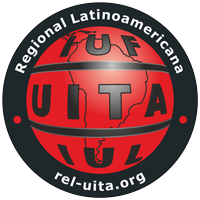Forced recruitment
The government of Myanmar is implementing forced recruitment tactics with young people that are almost identical to those employed decades ago by the Guatemalan army.
Gerardo Iglesias
24 | 4 | 2024

Over the past 12 months, the Burmese military has suffered defeats in dozens of districts and townships. At the same time, mass desertions have led them to force young men into the ranks.
According to an update on the situation in Myanmar by the IUF Asia Pacific regional office, «many of the deserters have joined the People’s Defense Force (PDF) and allied forces fighting to restore democracy.»
The military junta, in desperation, has increased aerial bombardment of villages and towns in Sagaing and Rakhine.
«In February, the State Administration Council (SAC) military government announced that from April 2024 it would impose compulsory military service,» but began implementing it in January.
The National Unity Government (NUG) immediately denounced the policy as illegal.
«Our members of the Agriculture and Farmers Federation of Myanmar (AFFM) reported that in rural areas the military assigned a quota to local authorities in each ward with a number of young men who must enlist or else the entire locality must pay a fine and will be penalized.»
That «quota» varies. In some cases it amounts to five men while in others the military demands twenty youths from each ward.
In the town of M., in Mon state, all residents were ordered to attend a meeting organized by the local ward authorities. At that meeting, the authorities reported the following:
«Those people who qualify for compulsory military service will be selected through a draw or a lottery system. And the local population will fully cover the expenses of these people during their service.»
The authorities also warned that in order to fill the quota for the ward, young men found roaming the streets would be randomly arrested, as the Guatemalan Army did in the past, especially in rural areas.
Our affiliate, the Food Workers’ Federation of Myanmar (FWFM), reported that in industrial areas workers returning home from work were intercepted and forcibly loaded onto military trucks.
In one case, a group of 50 factory employees were captured as they left the factory.
«About 30 paid cash to be released, but those who could not pay were taken away,» he said.
Also, the FWFM received a confidential report of forced enlistments in Yangon.
«On March 31, in a raid in two wards in Yangon, more than 100 young men were forcibly taken away by the military in a single night. One was seriously ill.»
Thousands of people have flooded the airports and tens of thousands are trying to cross the border into Thailand to escape forced recruitment.
Those trying to flee across the Indian border cannot do so because the crossing is closed and they are forced to return to Myanmar.
The Guatemalan army used the same techniques between 1960 and 1996, during an internal war that left more than 250,000 victims, including the dead and disappeared.
According to War Resisters’ International, «the methods used included raids after religious services, at construction sites, in supermarkets and at soccer games.»
In 1994, the National Coordinator of Widows of Guatemala (CONAVIGUA) reported that 45 percent of the male population between the ages of 18 and 30 had been forcibly recruited by the armed forces at some stage in their lives.
The majority were indigenous, including many under the age of 15.
In Guatemala, popular resistance was decisive in bringing down one of the bloodiest dictatorships in Latin American history. The same, we are certain, will happen in Myanmar.
Convenio Rel UITA – UITA Asia Pacífico

